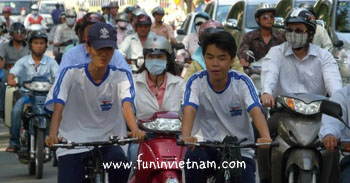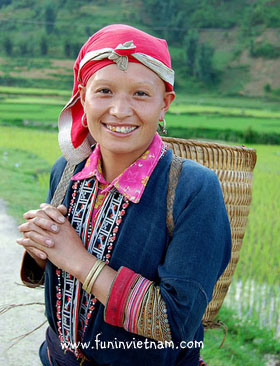 By April 1, 2009, Vietnam had 85.789 million people, of which 49.5 percent were men and 50.5 percent women. Vietnam is the third most-populated country in Southeast Asia and 13th in the world, announced the General Statistics Office’s chief Nguyen Duc Hoa on August 13.
By April 1, 2009, Vietnam had 85.789 million people, of which 49.5 percent were men and 50.5 percent women. Vietnam is the third most-populated country in Southeast Asia and 13th in the world, announced the General Statistics Office’s chief Nguyen Duc Hoa on August 13.
According to the General Statistics Department, in the last ten years (1999-2009), Vietnam’s population increased by 9.47 million, at an annual population growth rate of 1.2 percent, compared to 1.7 percent in the 1989-1999 period.
The census conducted revealed that the country’s women/men ratio is 100/98.1 compared to 100/96.7 in 1999.
25.3 million live in urban areas and nearly 65 million in the countryside. Therefore, in ten years, the urban population rose by 3.4 percent a year and it was 0.4 percent for the countryside due to immigration and urbanization.
Population density currently stands at approximately 267 persons per square kilometer. The largest centers of population are Ho Chi Minh City (7.1 mil), Hanoi (6.4 mil), and the cities of Hai Phong (1.8 mil) and Da Nang (0.8 mil). The former royal capital of Hue and the southern resort town of Vung Tau also support large growing communities.
Source: Vietnamnet.vn
 Vietnam is a multinational country with 54 ethnic groups. The Viet (Kinh) people account for 87% of the country’s population and mainly inhabit the Red River delta, the central coastal delta, the Mekong delta and major cities. The other 53 ethnic minority groups, totaling over 8 million people, are scattered over mountain areas (covering two-thirds of the country’s territory) spreading from the North to the South.
Vietnam is a multinational country with 54 ethnic groups. The Viet (Kinh) people account for 87% of the country’s population and mainly inhabit the Red River delta, the central coastal delta, the Mekong delta and major cities. The other 53 ethnic minority groups, totaling over 8 million people, are scattered over mountain areas (covering two-thirds of the country’s territory) spreading from the North to the South.
Among ethnic minorities, the most populated are Tay, Thai, Muong, Hoa, Khmer, Nung… with a population of around 1 million each, while the least populated are Brau, Roman, Odu with several hundred people each. The Viet people succeeded in establishing a centralized monarchy right in the 10th century. The Cham people once boasted a flourishing culture early in the history. The Tay, Nung, and Khmer peoples had reached high levels of development with the presence of various social strata. The Muong, H’mong, Dao, Thai peoples… gathered under the rule of local tribal heads. Many ethnic groups divided their population into social echelons, especially those who lived in mountainous areas.
A number of ethnic minorities had mastered some farming techniques. They grew rice plants in swamped paddy fields and carried out irrigation. Others went hunting, fishing, collecting and lived a semi-nomadic life. Each group has its own culture. Beliefs and religions of the Vietnamese ethnic minority groups were also disparate from each other.